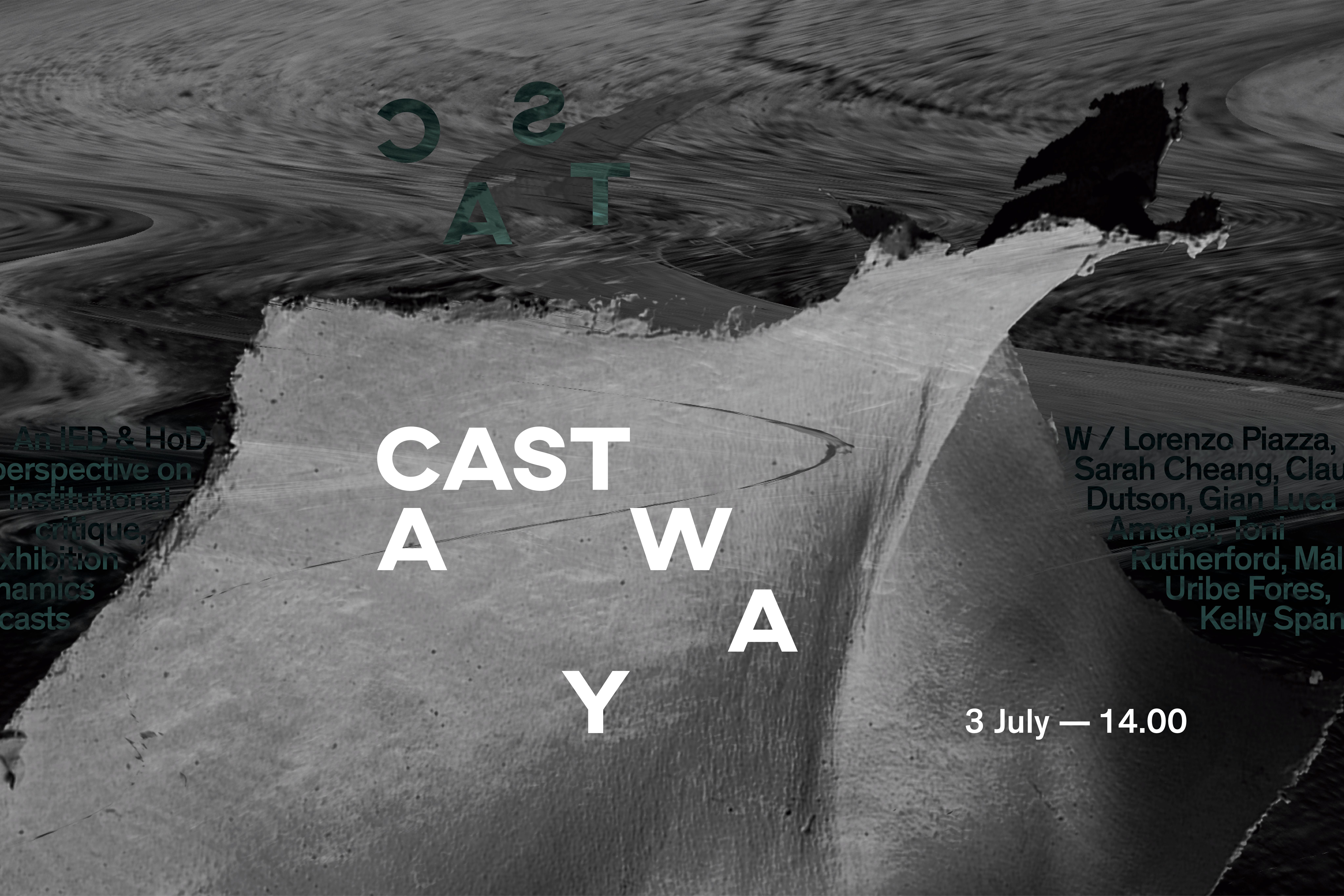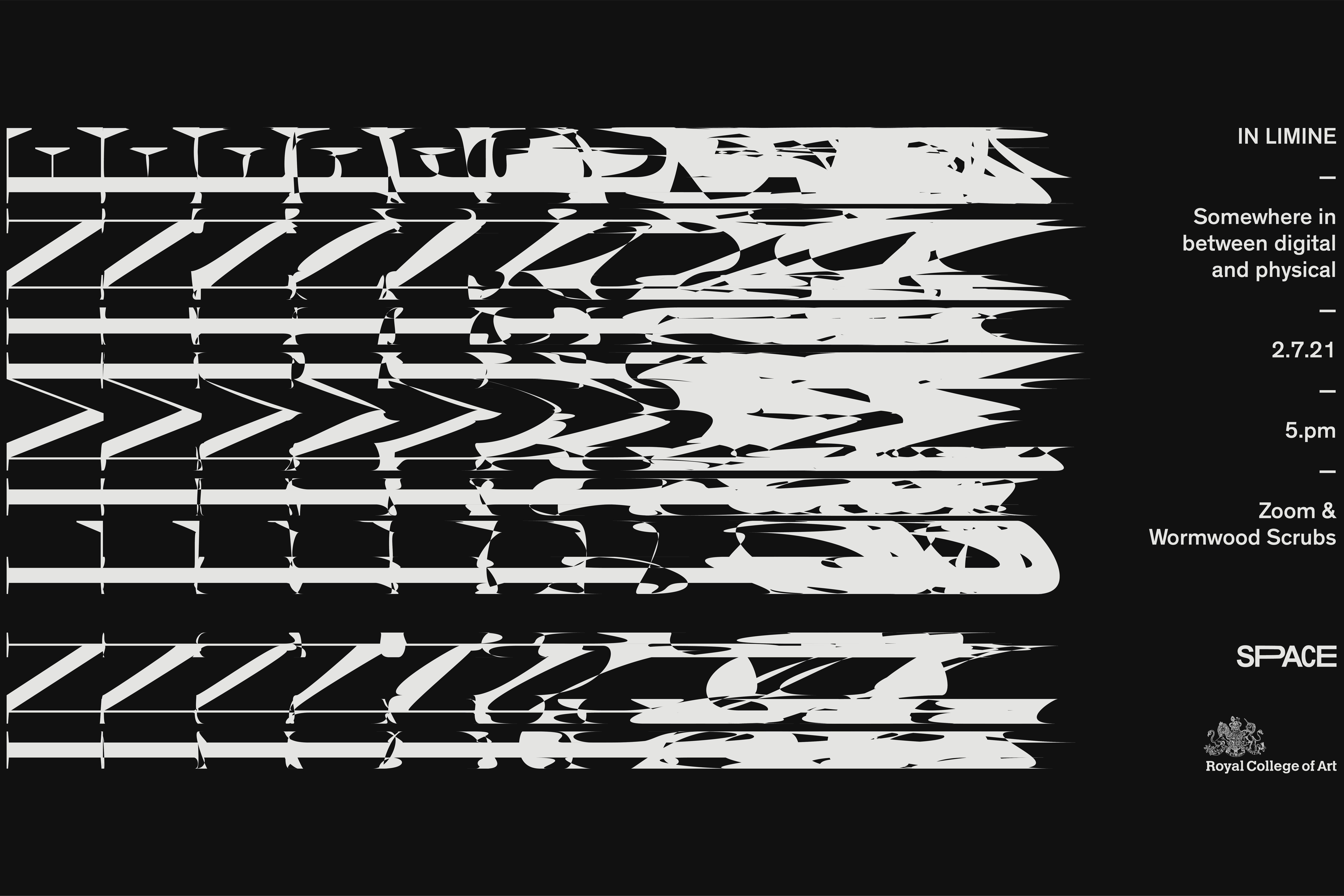Lorenzo studied BA Product Design at the University of Bologna, Italy, the leading Alma Mater in the country, where he graduated First Class with Honours. He then moved to London to attend the Royal College of Art, where he first completed the Graduate Diploma, with distinctions, and enrolled in the Experimental Design pathway of the Information Experience Design Master’s degree. His projects have been showcased at the Bologna Design Week, he participated at the Xcavations exhibition at the Crypt Gallery in 2019 and was set to be featured at the 2020 Media Architecture Biennale in Amsterdam before the pandemic hit.
Lorenzo Piazza

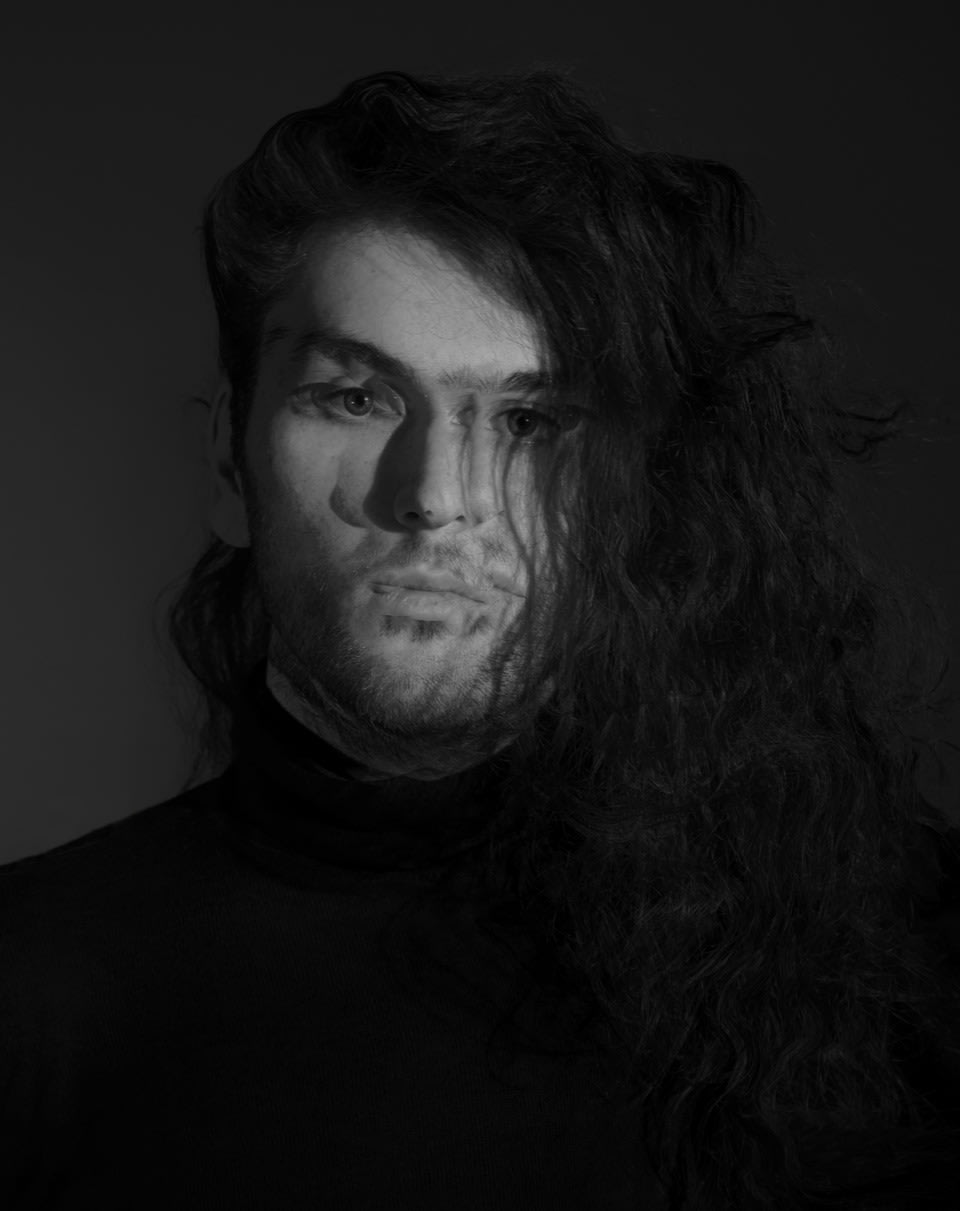
I am passionate about projects built around elements of surprise, magic and heritage.
Three of the main threads that are often woven into the fabric that makes up my work are themes of cultural heritage, identity and memory. These three entities are tightly connected, and their intersection creates an incredibly vast landscape rich in material, sparks and space that can be used to ignite creative discourse and processes. I find that an effective way to convey such themes is the exercise of light, which in this case takes finds its form in projections.
The two projects presented here, each with its own identity yet both tightly connected to each other, revolve around a cast exhibited at the Victoria & Albert Museum and its original in Bologna, Italy. Both projects are aimed, though in very different ways, at providing a fuller experience of this artwork to the otherwise distant, somewhat cold and inevitably limited one of a traditional museum setting. The first does so through visceral and emotional appeal, the second with a more experimental approach through ironic storytelling.
—
IED hotline extension number #219
To leave a comment or say anything nice about my work, please dial the free IED hotline number 020 39831592 or overseas +44 2039831592. International calls cost subject to your operators fees.
Any feedback will be greatly appreciated.
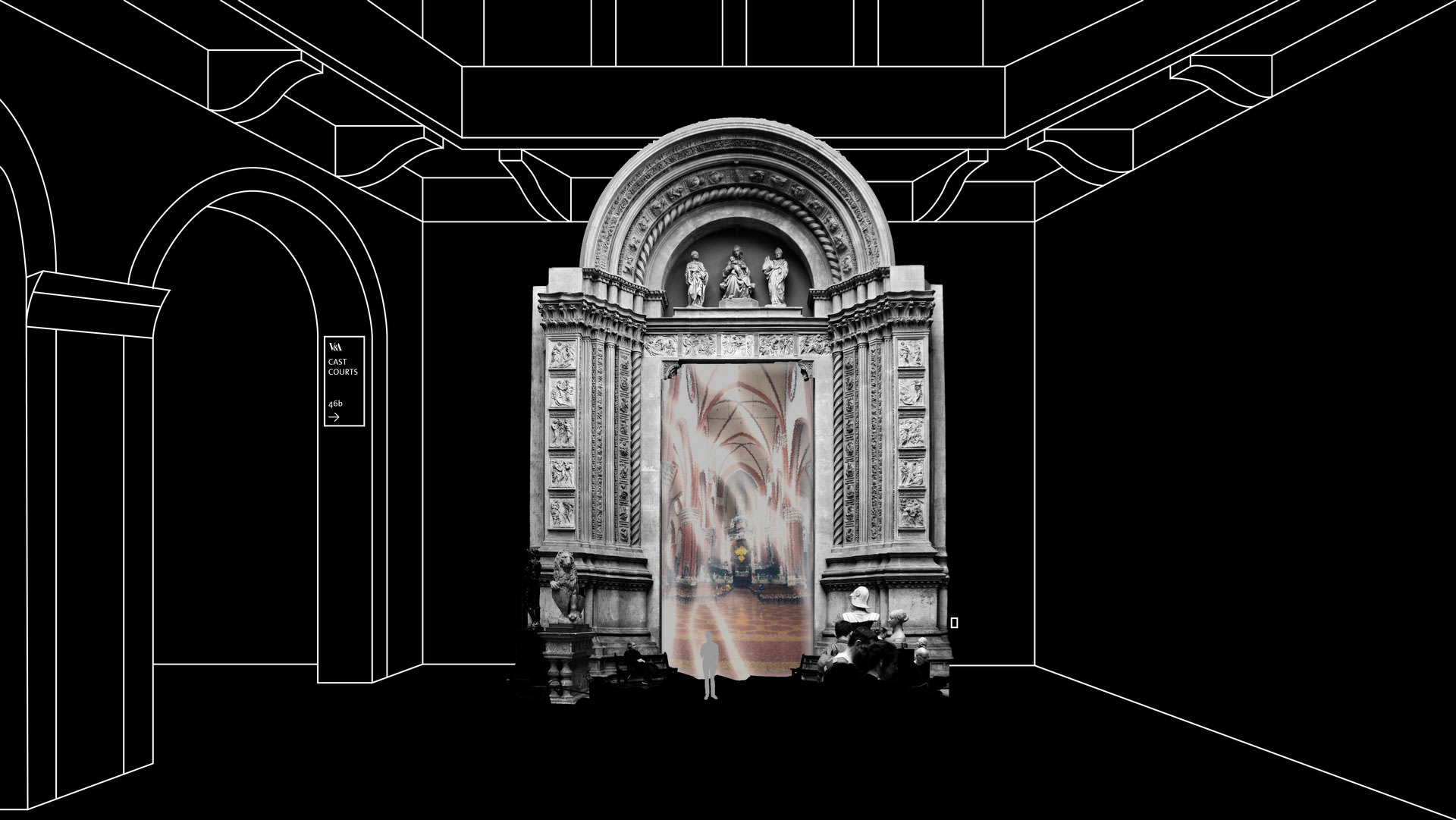
Medium:
Mixed media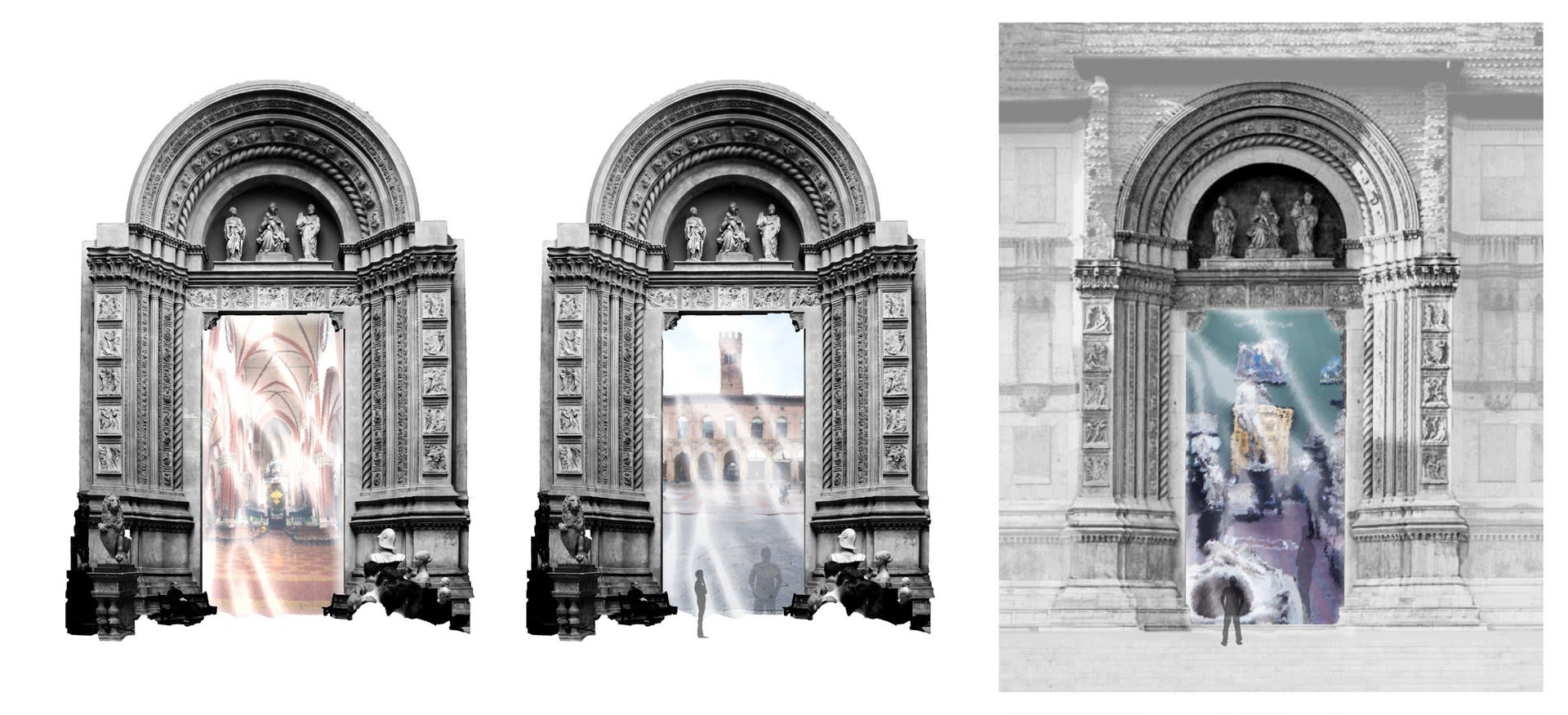
The cast and the original doorway create a portal linking the V&A Cast Courts and Piazza Maggiore in Bologna, Italy. It is achieved by setting up on each side a live projection of the other side of the portal: what's happening in Bologna will be shown in real time in London and vice versa. This creates a visually arresting installation, as the doorway and its cast are 15-meter tall, connecting two otherwise isolated locations and their surroundings.
Portale, however, is not just a visual gimmick. The goal is to provide the context that is inevitably missing in the museum, as there is so much that a label can communicate to the audience about the artwork to which it belongs. Seeing the setting of the original artifact, getting a sense of the scale of its building, hearing the sounds that surround it and even communicating with the people in its proximity; all this contributes to a fuller, more authentic experience of that artifact that a simple museum presence would never achieve. It would also enhance significantly a sense of escapism that one might seek in visiting a museum, transporting the visitor to a different place, city, country, culture even in times when traveling isn't easy.
A prototype for this project was first publicly exhibited in late 2019.
Medium:
Projection, TPUSize:
11 x 15 m![[untitled]](https://res.cloudinary.com/rca2020/image/upload/f_auto,h_1081,w_1920,c_fill,g_auto,q_auto/v1/rca2021/60c3aa13a98c7847e5053a9c-325186?_a=AXAH4S10)
On the London side of the portal, the live feed projection switches periodically from what the doorway faces on the outside, Piazza Maggiore, to the inside, the basilica of San Petronio. In doing so, visitors of the V&A can take a look at all space surrounding the doorway, thus getting information on its original setting and the scale of the building to which it belongs.
This alternation creates a contrast which is both visual and acoustic. Visually, the bright, open, messy and often busy space of the city's main square clashes with the darker, closed, austere and sparsely occupied naves of the monumental church. Acoustically, the noise of people walking, cycling, chatting, shouting, sometimes singing, along with sounds of the sporadic animal or police car are in stark juxtaposition with the almost-surreal silence, occasionally interrupted by quiet prayer, of the church's interior.
Medium:
Projection, TPUSize:
11 x 15 m![[untitled]](https://res.cloudinary.com/rca2020/image/upload/f_auto,h_1252,w_1920,c_fill,g_auto,q_auto/v1/rca2021/60c3b00da98c7847e50699f9-374293?_a=AXAH4S10)
In Bologna, on the other hand, the projection features a live feed of the Cast Courts in the V&A. The value of having the projection on this side too, aside from fitting in the concept of the portal, is so that people in Piazza Maggiore have an opportunity to connect with others at thousands of kilometers away and, possibly more importantly, they are presented with an opportunity to better realise the artistic value of an artifact that we, passing in front of it so frequently, might take for granted. Indeed, it is not a known fact that the San Petronio doorway was deemed so valuable within the human artistic landscape that one of the most important museums in the world decided to include it alongside casts of masterpieces such as Michelangelo's David and the Trajan Column.
Medium:
Projection, TPUSize:
11 x 15 m![[untitled]](https://res.cloudinary.com/rca2020/image/upload/f_auto,h_549,w_1920,c_fill,g_auto,q_auto/v1/rca2021/60c3f38ba98c7847e51a801f-102961?_a=AXAH4S10)
The same process and technique could be applied to a multitude of pieces within the Cast Courts, creating a network spanning the globe with the V&A as its fulcrum. The museum could become a hub giving access and connecting locations all over the world.
![[untitled]](https://res.cloudinary.com/rca2020/image/upload/f_auto,h_440,w_1920,c_fill,g_auto,q_auto/v1/rca2021/60c4014fa98c7847e51c105b-167341?_a=AXAH4S10)
This project embraces a more experimental approach to the task of providing context to the doorway's cast.
The idea came to life by reading the label of the artifact, which states that the doorway comes from the cathedral of Bologna. However, San Petronio is not the cathedral of the city, but a basilica. This could normally be an unimportant inaccuracy, as at the end of the day it is the most important church of the town (usually the cathedral). However this particular church was built by the town for the people as a civic temple almost as a challenge to Rome and the Vatican, and calling it a 'cathedral', which is the official Vatican-owned, -approved and -controlled see of the diocese really goes against the whole point of the building's conception and existence.
Having noticed that, I further analyzed the label and found that that is not the only inaccuracy in the label and that most of the description doesn't even concern the doorway itself. So, I wanted to make a project that played into this mixture of right, wrong and irrelevant information creating a museum experience, parallel to the traditional one, that plunges the visitor in a state of gradually increasing suspicion towards the information with which they are being provided.
The aim of this is to encourage visitors to apply critical thinking even in situation where one might think that that has been done for them already, and not to blindly take established institutions' word at face value, but actively participate in filtering and enriching the information surrounding artifacts. This is not done by pointing accusatory fingers or being confrontational towards the institution, but in a playful and ironic way that will hopefully leave visitors amused as well as critically engaged.
Medium:
Mixed media![[untitled]](https://res.cloudinary.com/rca2020/image/upload/f_auto,h_1076,w_1920,c_fill,g_auto,q_auto/v1/rca2021/60c4b46ba98c7847e56088af-948037?_a=AXAH4S10)
The first and most obvious piece for a museum experience is the label. A twin label is placed next to the existing one so that they look like a pair of equally official items. However, this second label fully embraces the idea of a mixture of true, half-true, false and irrelevant information. It starts believable and truthful enough, but gradually features increasingly implausible, almost preposterous claims so that by the end, hopefully, some alarm bells of skepticism will have set off in the visitor's brain. Suspicion ensues and individuals might feel the need to fact-check or confirm their doubts.
Medium:
PrintSize:
~ 10 x 15 cmThe second element of a museum experience, and the richest of this parallel one, is the audio guide. One that could be added to the already-existing V&A audio guides, it is a collection of stories around the doorway and its building of which, like the label, some are true, historical, legit, some are based on truth but embellished by centuries of telling, some are subjective (therefore arguably neither true nor false) and some are completely made up.
Once again, it is up to the user to find their way through the experience, although in this case clues can be found in the guide's pages that might help in trying to filter truth and helpful content from the noise.
Speakers who lended and would lend their voice and input to the audio guide include University of Bologna professors, Town Council members, Diocese representatives, citizens, creatives, museum guides and more.
Medium:
AppSize:
1125 x 2436 pixels
Another element that contributes to a full parallel museum experience is the map. Although it would work as a print-out of the audio guide stories with an addition of pictures, drawings and documents, it would be even more effective in a scenario of evolution of the project.
Indeed, there is ample room for expansion here, as more casts, original artifacts and other items more or less inaccurately exhibited could form a broader, bigger parallel museum experience. Labels, audio guide(s) and a map could lead visitors through artworks, a ghost tour within the museum aimed at encouraging people to engage critically with institutional authority in a playful and ironic way. It would also be an opportunity for a collaboration between designers and artists of different backgrounds, each applying their version of this system to one or two somewhat-misrepresented artifacts that they know and love.
Medium:
PrintSize:
A5![[untitled]](https://res.cloudinary.com/rca2020/image/upload/f_auto,h_534,w_1920,c_fill,g_auto,q_auto/v1/rca2021/60c40614a98c7847e51cdd57-540654?_a=AXAH4S10)
IED hotline extension number #219
To leave a comment or say anything nice about my work, please dial the free IED hotline number 020 39831592 or overseas +(44)2039831592. International calls cost subject to your operators fees.
